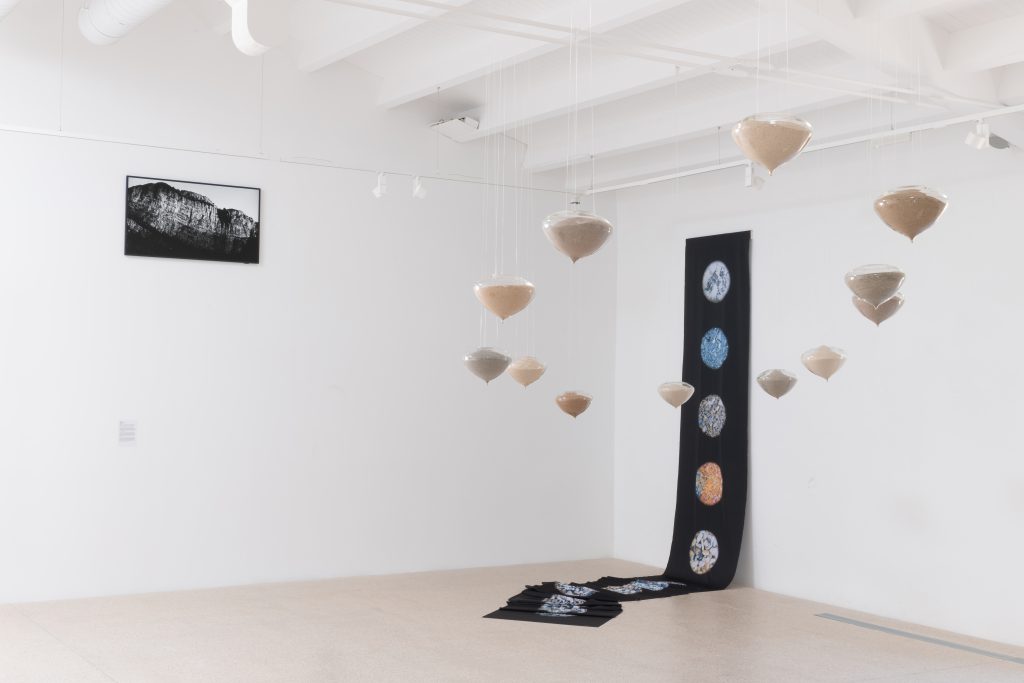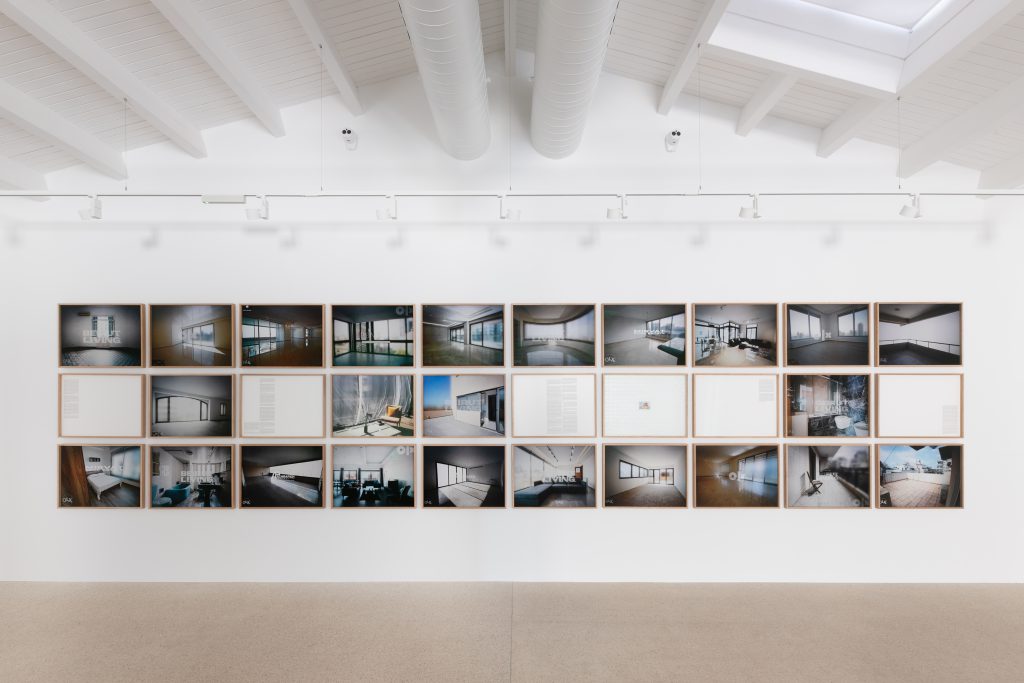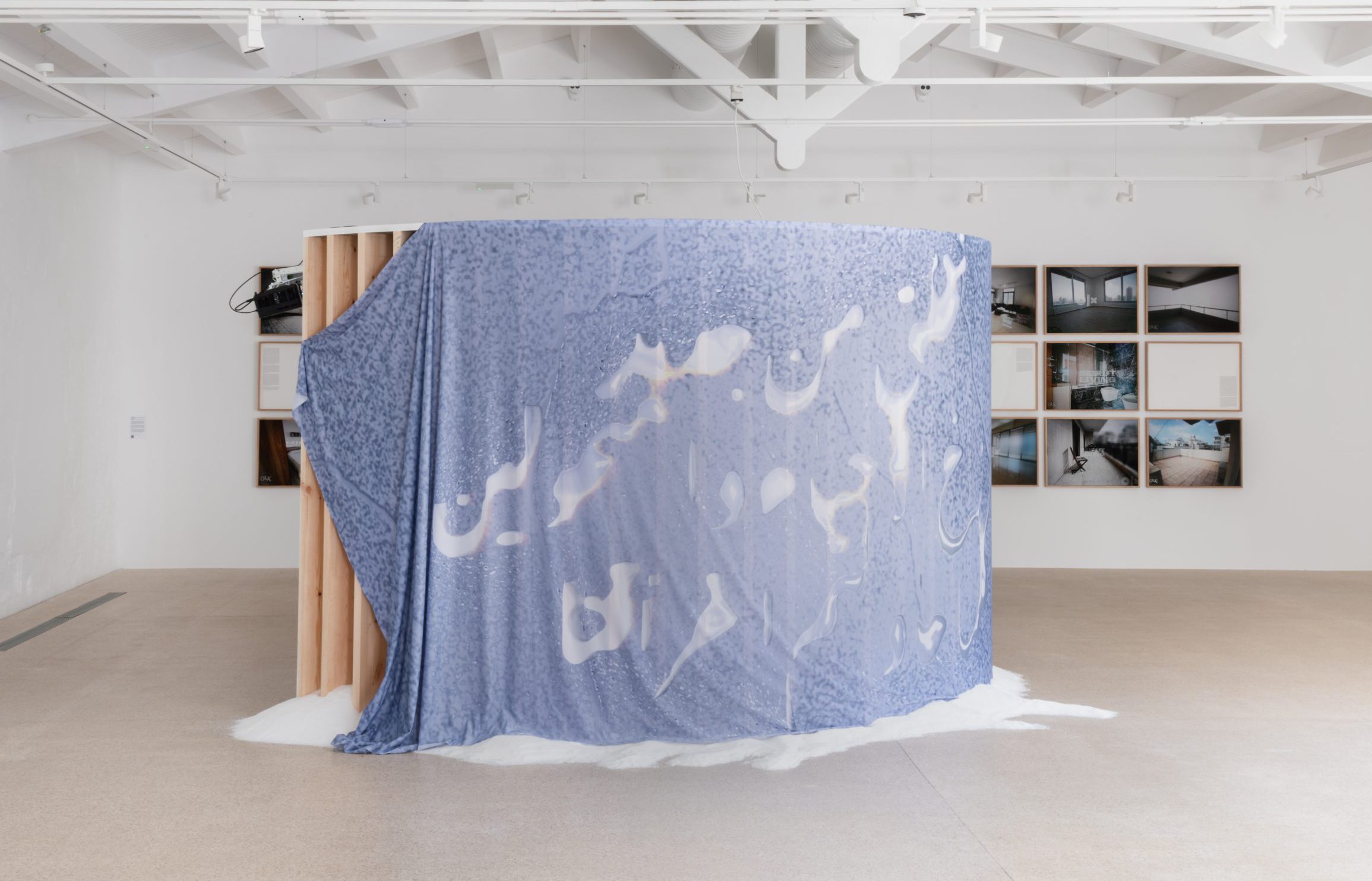Set on an island in the eponymous sea off the coast of Menorca, After the Mediterranean at Hauser & Wirth meditates on eight artists’ connection with its storied waters.
This is an exhibition that is literally held aloft by the sea. Invited to take a shuttle boat from the mainland to Illa del Rei, one sees of this smallest of islands, a rock that is surrounded and sustained by the Mediterranean, the waters spitting at the yellow vessel on route. Onshore and inside the exhibition, the title After the Mediterranean reads like the aftermath of a world without water. Sited in an outbuilding of a centuries-old converted hospital, the gallery houses an array of coloured objects that litter the floor, as if washed up by the encroaching waters. Around which are a choice of photographs, which capture and recreate the sea, that for their abstraction recall Gerhard Richter or, more recently, the chalk drawings of Rinus van de Velde.
Curated by Spanish researcher and writer Oriol Fontdevila, After the Mediterranean is not about the now but what is to come, and for this methodical examination of the sea Fontdevila has invited artists to investigate their attitudes towards the water, for its effect on the ecosystems that sustain so many different life forms; it being about the ‘in’ and the ‘on’ of the water. Seen as a series of experiments, the exhibition is made up of fragments that never quite come together, as though the voices of the individual artists carry so many ideas that the materiality is missing. Willing the waters in, the works struggle to explain themselves, with the artists seeing the sea very differently. Of greater merit is the invitation to consider the water from their perspectives, which enables one to encounter the effects of the sea without seeing it.

Ghanaian-born, ‘anti-disciplinary’ artist and educator Adjoa Armah creates Franz West-like fossils that appear on the floor like coloured and crippled furniture. Through these astute works for her understanding of space, Armah introduces a wealth of ideas – about identity, one’s understanding of the object as an instrument and evidence of a civilization, and of time, as it is referred to in the title of the exhibition, which as a body of works offers immeasurable meaning. Above her soft sculptings hang a series of glass vessels holding different coloured sand from indiscriminate locations on the island and which for the artist enable us to “tell the time”. Explaining, that having been on the island, as part of a research and working residency offered to the artists, she sees the shaping of the island by the waters, as someone seeing the sea anew.
Menorca-born and London-based artist Erola Arcalís presents works that are two-dimensional, successfully exploring the sensation of time against the sensibilities of the landscape and enabling and offering the present and future a platform on which to apply itself. Shipwreck Studies (2017–22) comprises photographic works that are deliciously difficult to read as they sink into their own swell of water. Intentionally including nothing of the horizon, they appear as abstracted images that are timeless, as is the condition of the water. Conceived of by an artist drawing on her interests in narrative and the nature of memory as a motioned experience, they offer her audience these tonal representations of reality, as recorded by the artist’s choice of images.
One of the smaller works in the series is pinned to the wall, as though having been washed up by the water – a self-contained photograph of Francesco Petro building his last ship (1981). A man stands on a wooden frame, with the pieces stretched out in front of him as he singlehandedly builds the pictured boat for his own story of the Mediterranean. With his exact identity omitted from the label, we are intrigued into a desire to introduce the man to our own lives. Meanwhile, Laia Estruch’s Kite 2 (2023) is tied to the trees, appearing to want to up and leave for the waters beyond the island’s edges, her work being about the relationship between the human action and the sculptural form. Everything of which is activated by the artist’s inventive performances, and to arrive so many days after the event is to feel like you are missing something. The cinematic installation Rising up from Halite (2023) by Huniti Goldox, a collaborative duo of Jordanian Areej Huniti and (formerly) East German-born Eliza Goldox, encircles part of the gallery space as a computer-generated window onto a sea and snow-filled world, as crudely cut figures wander through pixelated landscapes. The work addresses how the human phenomena of political systems and societal living affect the properties and patterns of water, yet somehow fails in its transmission of such lofty ideas, deserving of something much simpler.

More effective is the framed photography of Lebanese artist Omar Mismar, whom you feel is personally moved by the accidental aesthetics of war. Creating a narrative from the collateral that comes with conflict, his wall of photographed windows recalls so many of the empty environments that line the outer edges of any industrial city. Yet Mismar’s captions and accompanying images originate from more disastrous geographies, as the artist cleverly captures the deceit of delivering a war in a climate of normality.
Works by French artist Sara Ouhaddou, including I Give You Back What’s Mine / You Give Me Back What’s Yours (2020), conjure so much of the rhetoric about artefacts that are taken by land and sea from their place of origin to emerge elsewhere. Forensic tables that are accompanied by abstracted posters. Albania’s Abi Shehu introduces her own issues with the Mediterranean, with works that are as beautiful as they are absurd and interested, as is explained by the accompanying literature, “by the unrepresentable and unknowable dimensions of people, societies, places and historical events.” Reaching for incredible ideas that address the modern experience, everything appears of another world. Far from being picturesque, Fontdevila’s choice of artists draws on the consequences of coming into contact with the water, which has you on the return boat feeling something of the minefield of the Mediterranean, and less of the majesty of it.
After the Mediterranean runs until 29 October 2023
This review first appeared in Canvas 108: The Root of It All



